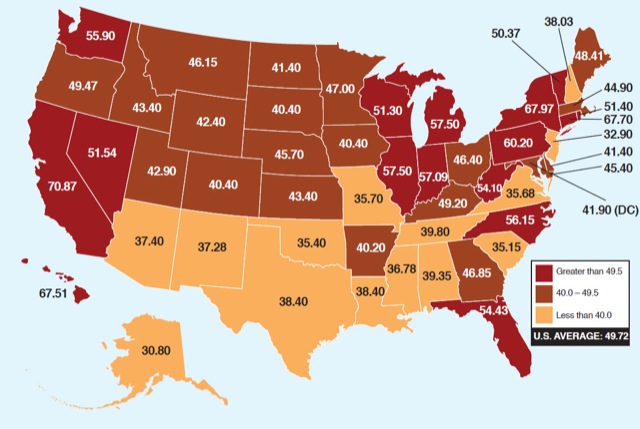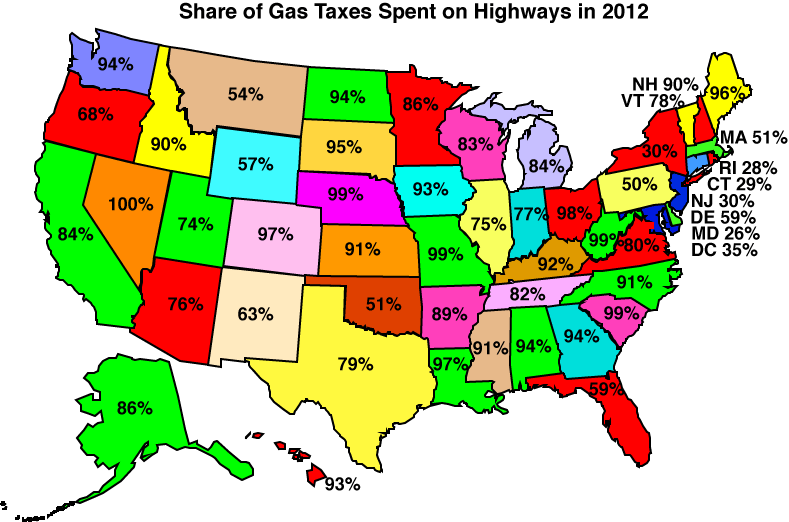
Click image to go to the API web site for more detail.
Their goal, I suppose, is to show that the oil companies aren’t making anywhere near as much profit off of gasoline as the government is. But the map also shows some clear geographic differences. First, the lowest taxes are in the sunbelt, while the highest are in ultra-blue states on the coasts and upper Midwest. Second, the range in gas (excise) taxes is quite wide, from 10.5 cents per gallon in New Jersey to 37.5 cents in Washington state.
However, it’s not enough to know how much states collect in taxes from highway users; it’s also important to know how they spend it. So, based on table SDF from the 2012 Highway Statistics, the Antiplanner made the following map showing the share of gas taxes states spent on highways in 2012.

Click image for a larger view.
Once again, the range is quite wide, from 28 percent in Rhode Island to 100 percent in Nevada. This time, the geographic trends aren’t as clear, with several states in the Sunbelt, including Oklahoma and New Mexico, spending well under 70 percent of gas taxes on highways. One clear trend, however, is that several states on the north Atlantic seaboard spend only 28 to 51 percent of gas taxes on roads.
I could make a similar chart for vehicle registration fees, but it turns out that–at least according to the 2012 Highway Statistics–the results would be almost identical. Most states that have toll roads, however, spend 100 percent of toll revenues on the roads. The exceptions are New York, at 69 percent, Massachusetts, at 97 percent, and Virginia, at 96 percent. (Note that all of these numbers apply only state toll roads and gas taxes, not to any city or county toll roads, gas taxes, or fees.)
Several states dedicate a hefty share of highway user fees to transit (versus roads): Connecticut is the leader at 71 percent; followed by New York at 55 percent, Maryland at 42 percent; DC at 35 percent; Rhode Island at 31 percent; Pennsylvania at 24 percent; Illinois at 17 percent; Virginia at 13 percent; and New Jersey at 11 percent. Arizona, Georgia, Mississippi, Montana, Nebraska, Ohio, Oklahoma, and West Virginia spend none of their gas taxes on transit, while the remaining states are in the single digits.
As readers should know, I oppose subsidies to highways or any other form of transportation. But the purpose of user fees is not to provide a slush fund for highway engineers or other transportation managers; it is to link users and providers so that both face the right incentives. Diverting gas taxes away from highways weakens the link between highway managers and users, and spending highway fees on transit weakens the link between transit agencies and transit riders.
[…] DOT table, pointed out to me by Randal O’Toole, shows that money spent on highways could be increased immediately by over 30% if highway money was […]
[…] http://www.masterresource.org/motor-fuel-taxes-2/highway-taxes-vs-diversion-state/ […]